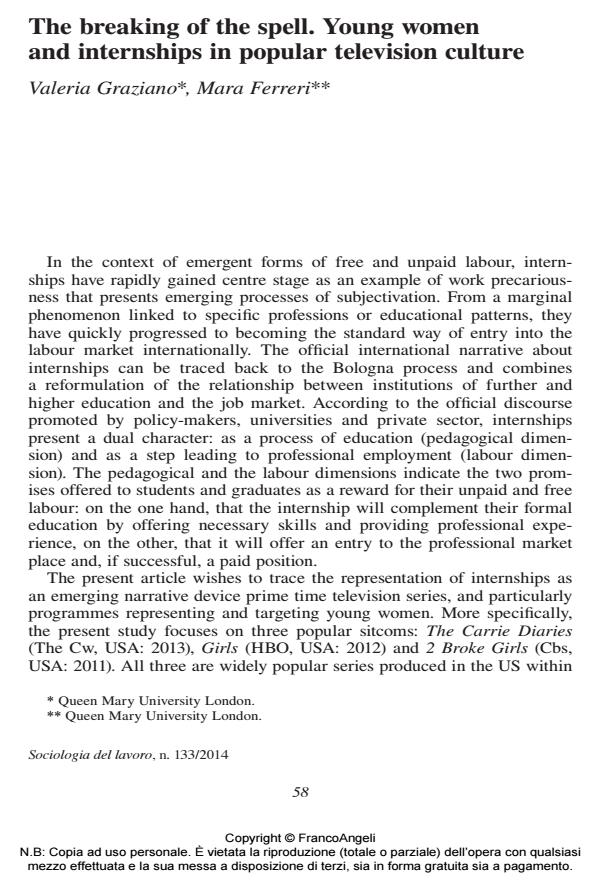The breaking of the spell. Young women and internships in popular television culture
Journal title SOCIOLOGIA DEL LAVORO
Author/s Valeria Graziano, Ferreri Mara
Publishing Year 2014 Issue 2014/133
Language English Pages 13 P. 58-70 File size 588 KB
DOI 10.3280/SL2014-133004
DOI is like a bar code for intellectual property: to have more infomation
click here
Below, you can see the article first page
If you want to buy this article in PDF format, you can do it, following the instructions to buy download credits

FrancoAngeli is member of Publishers International Linking Association, Inc (PILA), a not-for-profit association which run the CrossRef service enabling links to and from online scholarly content.
Questo articolo ha lo scopo di indagare gli immaginari popolari degli stage e del lavoro non retribuito, le loro implicazioni sulla soggettività e sulle emergenti concettualizzazioni del lavoro. In particolare l’articolo è basato su di un’analisi comparativa di tre serie televisive di successo incentrate sulle esperienze di giovani donne poste di fronte al loro ingresso nel mondo del lavoro. Analizzando l’articolazione dei rapporti di forza tra i personaggi e gli immaginari del lavoro e del successo lì proposti, le tre serie in esame: The Carries Diaries, Girls e 2 Broke Girls, mostrano una normalizzazione degli stage come rito di passaggio obbligato per tutte le giovani donne istruite che vogliano entrare nel mondo del lavoro professionale. L’articolo è quindi articolato attraverso diversi approcci che indagano le questioni pedagogiche, di genere e delle relazioni di lavoro. La preventiva critica inerente la duplice promessa ufficiale dello stage, come esperienza di apprendimento e come un passo verso il lavoro retribuito, viene analizzata in relazione ai recenti tentativi critici di contro rappresentazione e di organizzazione del lavoro gratuito.
Keywords: Internship, unpaid labour, popular culture, TV series, young women, labour immaginary
Valeria Graziano, Ferreri Mara, The breaking of the spell. Young women and internships in popular television culture in "SOCIOLOGIA DEL LAVORO " 133/2014, pp 58-70, DOI: 10.3280/SL2014-133004